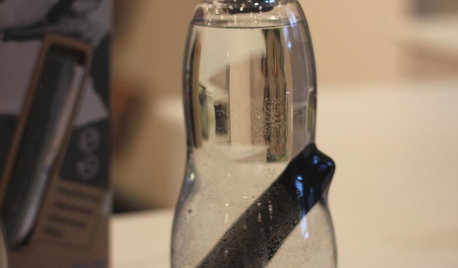Tomato report... and a question
Shelley Smith
9 years ago
Related Stories

EDIBLE GARDENSSummer Crops: How to Grow Tomatoes
Plant tomato seedlings in spring for one of the best tastes of summer, fresh from your backyard
Full Story
EVENTSReport From Italy: Mustard Yellow, Hidden Kitchens and More
See what our team in Italy discovered at Salone del Mobile 2016. Which new design idea speaks to you?
Full Story
TASTEMAKERSICFF 2012 Report: Black+Blum for Home Plus Office
Everyday items for the home and workplace — a water bottle, a dish rack — get an unconventional rethink by the award-winning British company
Full Story0

TASTEMAKERSICFF 2012 Report: Bespoke Global's Artisan Collective
Custom-crafted lighting and furniture are available with mere keyboard clicks from this group of high-end designers and artists
Full Story0

TASTEMAKERSICFF 2012 Report: Graypants' Ecofriendly Lighting
An everyday material yields intricate designs and uncommon beauty in lighting fixtures that tread lightly on the earth
Full Story
BATHROOM DESIGNSpecial Report: Bath Trends From Valencia
Spain Design News: Minimal Sinks, Stacked Vanities — and Modern Glam
Full Story
TASTEMAKERSICFF 2012 Report: New Wallpapers From Tracy Kendall
Stitched, sporting puzzle pieces, made for the outdoors ... British designer Tracy Kendall's wallpapers show noteworthy innovation
Full Story
COLOR10 Reasons to Make a Splash With Tomato Red
You won’t duck at these tomatoes. See how bold red shades can play up architecture, light up a dark spot and add drama
Full Story
LIFEKitchen Traditions: Tomato Season Meets a Family Legacy
Somewhere a Sicilian great-great-grandmother is smiling at a bowl of American-made sauce
Full Story
MOVINGHiring a Home Inspector? Ask These 10 Questions
How to make sure the pro who performs your home inspection is properly qualified and insured, so you can protect your big investment
Full StorySponsored
More Discussions






Okiedawn OK Zone 7
Shelley SmithOriginal Author
Related Professionals
College Park Landscape Contractors · Framingham Landscape Contractors · Goodlettsville Landscape Contractors · Kaneohe Landscape Contractors · Royal Oak Landscape Contractors · Teaneck Landscape Contractors · West Haverstraw Landscape Contractors · Centennial Decks, Patios & Outdoor Enclosures · Hampton Bays Decks, Patios & Outdoor Enclosures · Houston Decks, Patios & Outdoor Enclosures · New Lenox Decks, Patios & Outdoor Enclosures · Redlands Decks, Patios & Outdoor Enclosures · Salisbury Decks, Patios & Outdoor Enclosures · Towson Decks, Patios & Outdoor Enclosures · Windsor Decks, Patios & Outdoor Enclosurescowdiddly
Okiedawn OK Zone 7
Lynn Dollar
Okiedawn OK Zone 7
Shelley SmithOriginal Author
Okiedawn OK Zone 7
Lynn Dollar
Okiedawn OK Zone 7